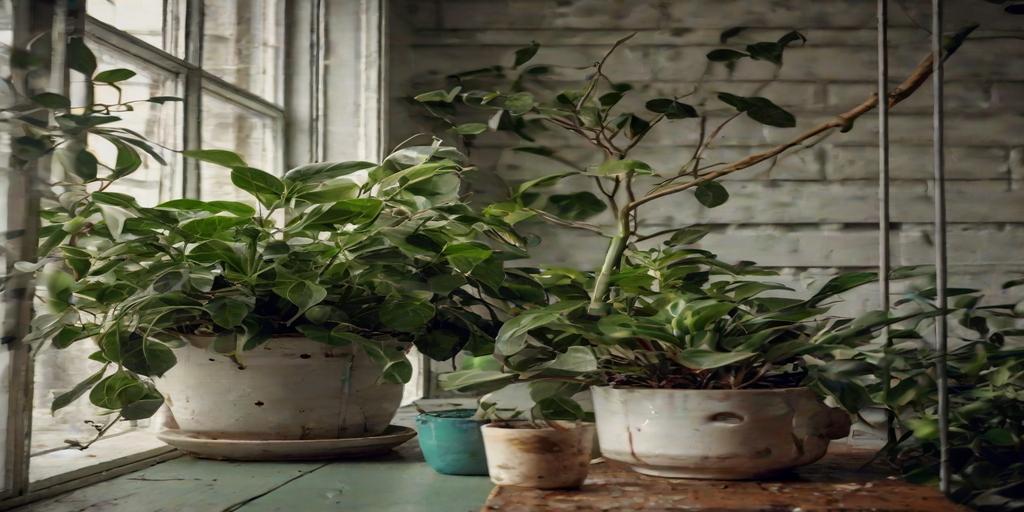
Zero-Waste Care Guide for Low Light Hanging Plants: Sustainable Tips for Thriving Greenery
Discover a zero-waste care guide for low light hanging plants! Learn sustainable watering, fertilizing, and potting tips to keep your indoor greenery thriving—without waste.
Introduction
Did you know that over 90% of houseplant waste comes from plastic pots and synthetic fertilizers? If you love hanging plants but want a greener approach, this guide is for you! Low light hanging plants like pothos, spider plants, and philodendrons are perfect for indoor spaces, but caring for them sustainably can be tricky. In this zero-waste care guide, we’ll explore eco-friendly ways to nurture your plants—from composting to upcycled planters. Let’s turn your home into a lush, waste-free oasis!
Choosing the Best Low Light Hanging Plants for Zero-Waste Care
Top Low Light Hanging Plants That Thrive With Minimal Care
If you’re looking for low-maintenance hanging plants that do well in dim spaces, consider pothos, spider plants, or philodendrons. These plants adapt well to low light and don’t require frequent watering, making them ideal for a zero-waste lifestyle.
Benefits of Slow-Growing Plants for Reduced Waste
Slow-growing plants like ZZ plants or snake plants mean less pruning, fewer trimmings, and less frequent repotting—reducing plant waste over time. They also stay healthy in the same container longer, cutting down on the need for new pots.
How to Propagate Plants to Avoid Buying New Ones
Instead of purchasing new plants, propagate your existing ones! Many low light hanging plants, like pothos and spider plants, root easily in water. Once they develop roots, transfer them to soil in upcycled containers for a completely waste-free way to expand your collection.
Sustainable Watering Practices for Low Light Hanging Plants
Collecting and Reusing Rainwater or Greywater
Reduce water waste by collecting rainwater in barrels or reusing greywater (like leftover drinking water or cooled pasta water) for your plants. Just make sure greywater doesn’t contain harsh soaps or chemicals.
Self-Watering Systems Using Upcycled Materials
Create a simple self-watering system with an old plastic bottle or jar. Fill it with water, invert it into the soil, or use a cotton wick to slowly hydrate the plant. This minimizes water waste and keeps plants consistently moist.
Signs of Overwatering vs. Underwatering in Low Light
Low light slows evaporation, so overwatering is a common issue. Yellow leaves and mushy stems signal too much water, while dry, crispy leaves mean your plant is thirsty. Adjust watering frequency based on your plant’s needs to avoid waste.
Zero-Waste Soil and Fertilizer Solutions
DIY Compost for Nutrient-Rich, Waste-Free Soil
Turn kitchen scraps like vegetable peels and coffee grounds into compost. Mix it with old soil to refresh it instead of buying new bags. This keeps nutrients cycling naturally and reduces landfill waste.
Natural Fertilizers Like Banana Peels and Eggshells
Skip synthetic fertilizers—banana peels (rich in potassium) and crushed eggshells (for calcium) can be buried in the soil or soaked in water to create a nutrient boost for your plants.
How to Reuse and Refresh Old Soil Sustainably
Instead of tossing old soil, revitalize it by mixing in compost or letting it dry out to kill any pests. Reusing soil reduces waste and keeps your plants thriving without constant repurchases.
Eco-Friendly Pots and Hangers for Low Light Plants
Upcycled Containers for Hanging Planters
Old jars, tin cans, or fabric scraps can become unique hanging planters. Just add drainage holes and a macramé hanger for a stylish, waste-free home for your plants.
Biodegradable and Reusable Pot Alternatives
Coconut coir pots, bamboo planters, or even newspaper pots are great biodegradable options. They break down naturally or can be reused for years.
Macramé Hangers from Recycled Materials
Instead of buying new macramé hangers, make your own using old fabric strips, yarn, or thrifted ropes. It’s a creative way to repurpose materials while keeping your plants elevated.
Pest Control Without Harmful Chemicals
Natural Remedies for Common Pests
Neem oil diluted in water or a garlic spray can deter pests without toxic chemicals. A simple wipe-down with a damp cloth also keeps bugs at bay.
Companion Planting to Deter Bugs
Growing pest-repelling plants like basil or marigolds near your hanging plants can naturally keep insects away, reducing the need for sprays.
How to Identify and Prevent Infestations Early
Check leaves regularly for spots or webbing. Early detection means you can remove affected parts before pests spread, avoiding waste from severely damaged plants.
Pruning and Maintenance with Zero Waste
Repurposing Trimmings for Propagation or Compost
Instead of tossing cuttings, propagate them in water or add them to your compost pile. Even small leaves can contribute to nutrient-rich soil.
Cleaning Leaves Sustainably (No Paper Towels!)
Use a soft cloth or an old T-shirt dampened with water to wipe dust off leaves. It’s reusable and keeps your plants breathing easily.
Seasonal Care Adjustments for Low Light Conditions
In winter, reduce watering since plants grow slower in low light. Rotate them occasionally for even growth, ensuring they stay healthy without extra resources.
Conclusion
Caring for low light hanging plants doesn’t have to create waste! By choosing sustainable materials, reusing resources, and adopting natural care methods, you can enjoy lush greenery while reducing your environmental footprint. Ready to go zero-waste? Start with one tip today—your plants (and the planet) will thank you!
